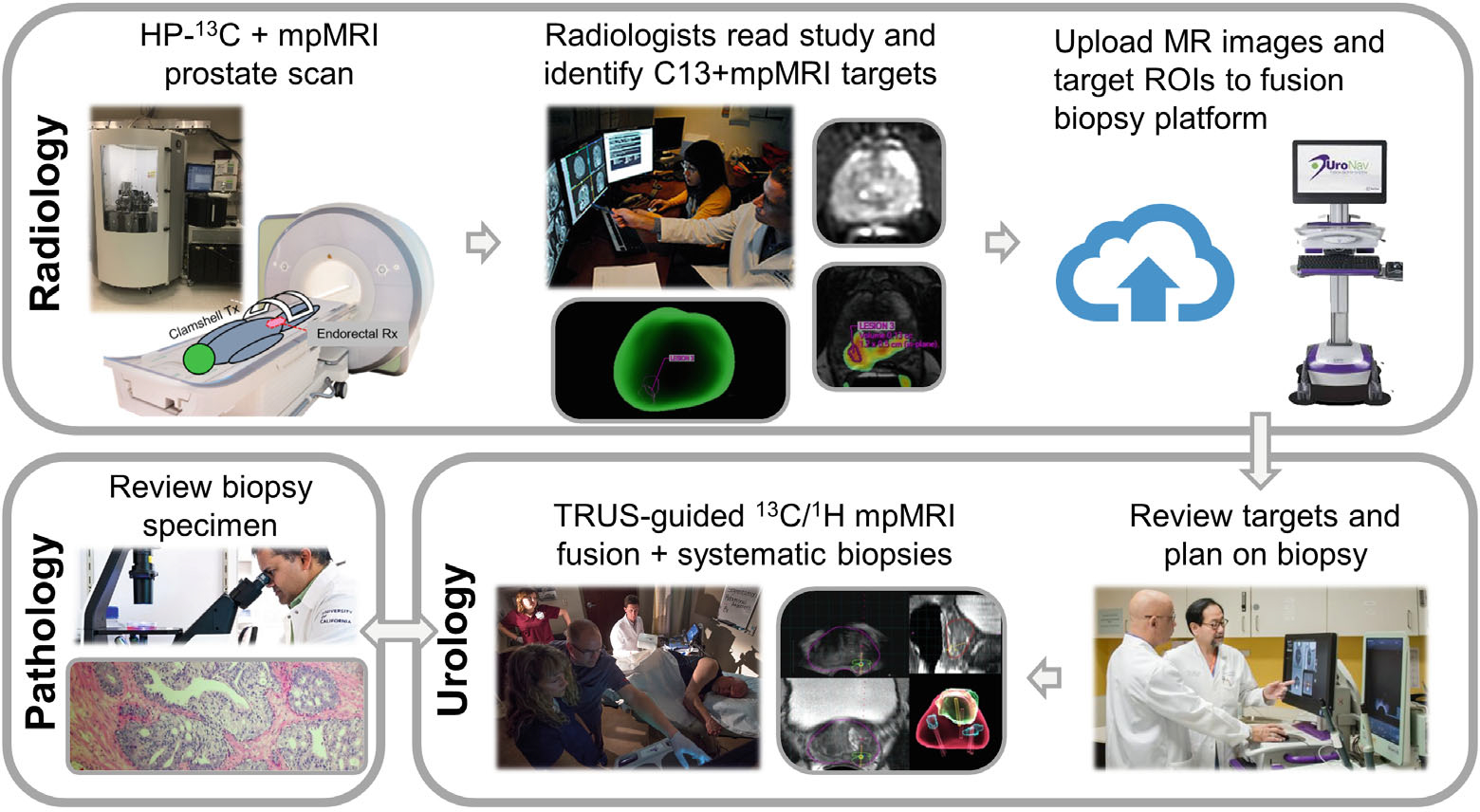FIGURE 1.

The workflow developed in this project for HP 13C MR research targeting of prostate biopsies based on abnormally high pyruvate-to-lactate conversion kPL values. The HP 13C MR exam and research targeting were integrated into the SOC MRI fusion and systematic biopsy procedures at our institution. First, the patient undergoes an integrated mpMRI exam of the prostate, including a 1-min acquisition following the HP 13C-pyruvate injection. The kPL map is calculated and uploaded to PACS and a software targeting platform (Dynacad, Philips Invivo Corp., Gainsville FL). A radiologist reads the study and outlines the research targets based on 13C kPL findings, in addition to those from the PIRADS lesions based on the 1H mpMRI. The targets and a report are uploaded to the fusion biopsy system (UroNav, Philips Invivo Corp., Gainsville FL) in the urologist’s offices, where they review the targeting and plan for the procedure. After US/MRI fusion-guided biopsies are performed, the tissue specimens are submitted to Pathology for processing and diagnosis. Thus, the HP 13C research biopsy integration takes advantage of the existing infrastructure and minimizes the additional workload for the researchers and clinicians involved. 13C, carbon-13; HP, hyperpolarized; kPL, pyruvate-to-lactate conversion rate; mp, multiparametric; PACS, picture archiving and communication system; PIRADS, Prostate Imaging Reporting and Data System; SOC, standard- of- care; US, ultrasound.
